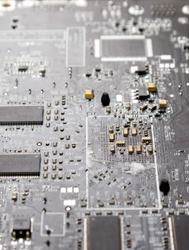Paving the way to quantum computing
In the emerging field of quantum information processing, superconducting devices are promising candidates for the implementation of quantum bits (qubits). While macroscopic in size, they are characterised by generic quantum properties such as quantised energy levels and superposition of energy states, which are commonly associated with atoms. As such, superconducting qubits might one day form the fundamental building blocks of quantum computers. But before then, a technology that combines the necessary level of control over two-level quantum systems with the possibility of mass production needs to be developed. Furthermore, for a quantum computer to realise its full potential, quantum information contained in the states of thousands of interacting qubits would have to be manipulated. The SQUBIT-2 project partners at the Delft University of Technology in the Netherlands have made important progress towards this goal. Researchers focused on standard flux qubits, made by joining Josephson joints with superconducting leads to form a closed circuit. When a magnetic field was applied perpendicular to the closed circuit, two quantum superposition states were formed as the current circulated in two different directions. Measurements of the microwave radiation emitted, made with a superconducting quantum interference device (SQUID), provided evidence of the symmetric and antisymmetric superposition states. These experiments provided the first spectroscopic measurements on two coupled flux qubits and the means to measure how long the system remained coherent. However, the most important feature is the number of quantum operations that can be performed before quantum coherence disappears. Since each pulse manipulating flux qubits can be as short as 1ns nanosecond, it should be possible to perform hundreds of operations, significantly less than the number a quantum computer would need to perform. The need for better ways to couple qubits with each other, and also with their environment was made evident. Efforts have already turned to improved fabrication techniques to reduce the defects in the junction barriers and increase decoherence times. It remains to be seen if superconducting qubits can be accurately controlled and if quantum computers made from superconducting qubits can be successfully scaled up.



